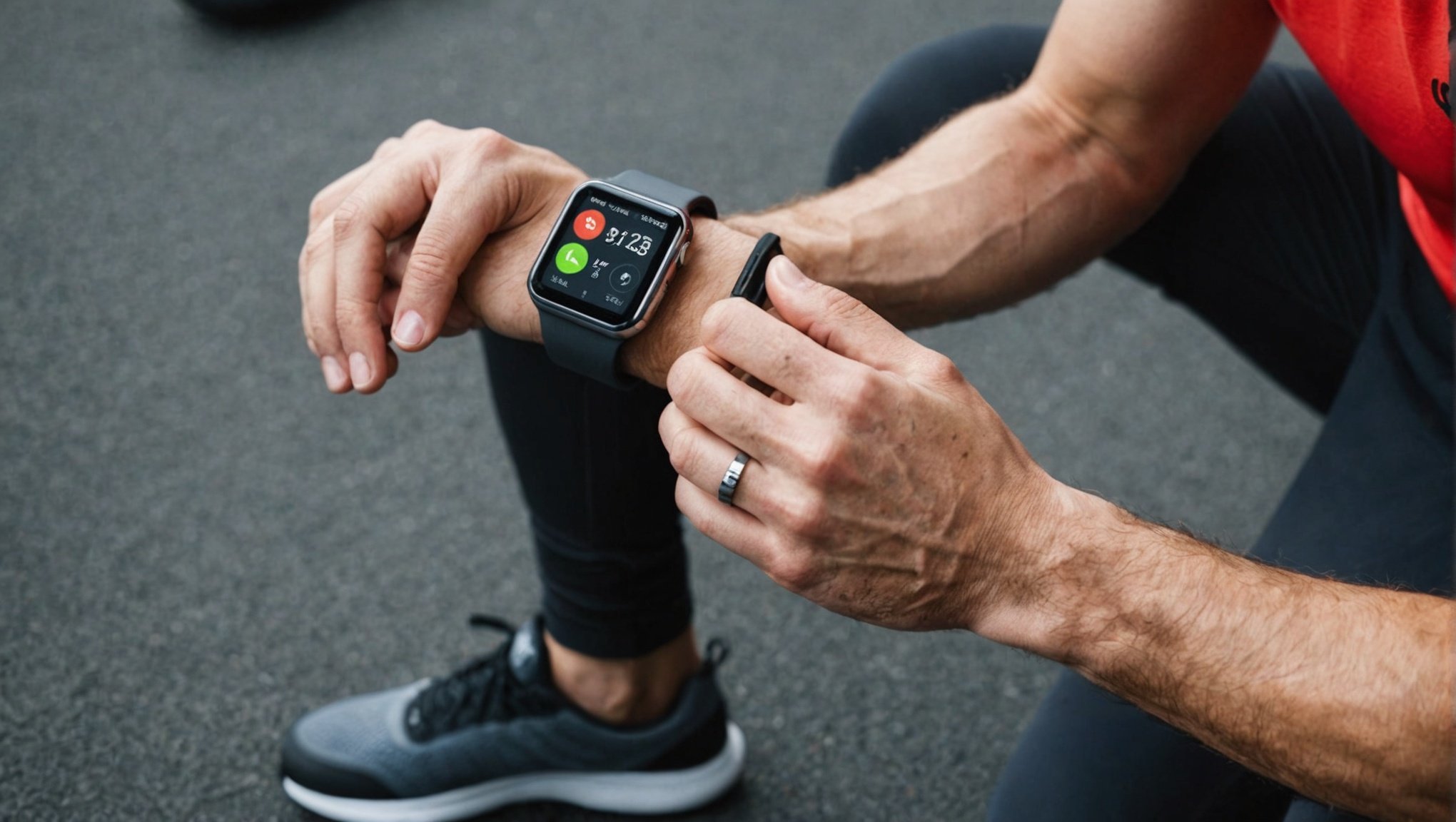The integration of smartphones with wearable fitness technology has revolutionized the way we monitor and improve our health and fitness. As we approach the end of 2024, the synergy between mobile devices and wearable gadgets is more profound than ever. From fitness trackers to the Apple Watch, these wearable devices have become indispensable tools for tracking our physical activity and overall well-being. This article explores the various techniques employed to seamlessly integrate smartphones with wearable fitness technology, highlighting the latest advancements and potential future developments.
The Role of Mobile Apps in Wearable Technology
When discussing the integration of wearable fitness technology with smartphones, one cannot overlook the crucial role played by mobile apps. These apps act as the bridge between the wearable devices and users, providing an interface to manage and interpret the collected data.
Also read : What Are the Advanced Settings for Using Your Smartphone as a Virtual Reality Controller?
Mobile app development for wearables requires a deep understanding of both software and hardware. Developers must create apps that can efficiently communicate with the wearable device via Bluetooth or other wireless technologies. Moreover, these apps must be intuitive, providing real-time data without overwhelming the user.
For instance, the Apple Watch syncs seamlessly with the iPhone, thanks to the sophisticated design of Apple’s mobile apps. These apps track metrics like heart rate, steps, and even sleep patterns. They present this information in an easily digestible format, encouraging users to make healthier choices based on the insights provided.
Topic to read : Can Smartphones Be Used to Monitor Solar Panel Efficiency in Homes?
Healthcare professionals are also leveraging these integrations. Wearable devices can now share patient data directly with health apps, allowing doctors to monitor physical activity and other health indicators remotely. This real-time monitoring can lead to more timely interventions and personalized care plans, potentially saving lives.
Advanced Tracking and Monitoring Techniques
Wearable fitness technology has advanced far beyond basic step-counting. Today, these devices offer sophisticated tracking and monitoring capabilities, thanks largely to their integration with smartphones. This combination allows for the collection and analysis of a wide range of health data.
Modern wearable devices like fitness trackers and smartwatches are equipped with various sensors that can measure heart rate, blood oxygen levels, and even ECG readings. When integrated with a mobile app, this data is not only stored but also analyzed to provide actionable insights.
For example, developers are now employing machine learning algorithms within mobile apps to predict health trends based on historical data. This allows users to receive personalized recommendations on how to improve their fitness routines. The integration of wearable devices with mobile apps also enables real-time tracking, so you receive immediate feedback on your physical activity.
Moreover, the development of cross-platform synchronization tools has made it easier to integrate various wearable devices with different smartphones. Whether you are using an Android phone or an iPhone, advanced APIs ensure that your wearable device can communicate seamlessly with your mobile app. This cross-platform compatibility is crucial for providing a consistent user experience, regardless of the device ecosystem.
User Experience and Interface Design
The success of any wearable device relies heavily on the user experience (UX) and interface design of the accompanying mobile app. A well-designed app can significantly enhance the user‘s interaction with the wearable, making the process of tracking and analyzing data both intuitive and enjoyable.
Developers must focus on creating mobile apps that are not only functional but also easy to navigate. The interface should be clean and uncluttered, providing clear visualizations of the collected data. For instance, the Apple Watch‘s Activity app uses simple rings to represent movement, exercise, and standing goals, making it easy for users to understand their progress at a glance.
Moreover, personalization features are becoming increasingly important. Wearable app developers are incorporating options that allow users to customize their dashboards, notifications, and even the types of data they wish to track. This level of personalization ensures that the app caters to individual preferences, making it more engaging for the user.
Another critical aspect is user engagement. Wearable fitness tech is often used to motivate individuals to stay active and healthy. Gamification elements, such as badges, challenges, and social sharing features, are commonly integrated into mobile apps to keep users motivated. These features not only enhance the user experience but also increase the long-term adoption of both the app and the wearable device.
Data Privacy and Security Concerns
With the integration of wearable devices and smartphones comes the inevitable concern of data privacy and security. The vast amounts of personal health data collected by these devices need to be stored and transmitted securely to protect user privacy.
Developers must adhere to stringent security protocols to ensure that user data is not compromised. This includes employing end-to-end encryption for data transmission between the wearable device and the mobile app. Additionally, developers should implement secure authentication methods, such as biometric verification, to protect user accounts.
The issue of data privacy is further complicated by the fact that many wearable devices and mobile apps are developed by different companies. This creates a fragmented ecosystem where data could be at risk if not properly managed. To address this, industry standards and regulations, such as the General Data Protection Regulation (GDPR) and Health Insurance Portability and Accountability Act (HIPAA), provide guidelines for handling health data.
Moreover, users are becoming more aware of their data privacy rights. Transparent privacy policies and user consent forms are now essential components of any wearable app. Users should be informed about what data is being collected, how it is being used, and who has access to it. This transparency helps build trust and encourages more people to adopt wearable fitness technology.
Future Trends and Developments
As we look to the future, the integration of smartphones with wearable fitness tech shows no signs of slowing down. Several emerging trends and developments promise to further enhance the capabilities of these devices and their associated mobile apps.
One such trend is the rise of AI and machine learning in wearable technology. These technologies can provide even more personalized insights and predictions, helping users to make informed decisions about their health and fitness. For example, AI algorithms could analyze data from multiple sources to predict potential health issues before they become serious.
Another exciting development is the advent of 5G technology. With faster data speeds and lower latency, 5G can significantly improve the real-time tracking capabilities of wearable devices. This will enable more accurate and immediate feedback, making it easier for users to adapt their fitness routines on the fly.
The integration of wearable devices with other smart home technologies is also on the horizon. Imagine your fitness tracker communicating with your smart refrigerator to suggest post-workout snacks or with your smart thermostat to adjust the temperature based on your heart rate. These interconnected ecosystems will provide a more holistic approach to health and fitness.
Lastly, wearable devices are becoming increasingly versatile. Beyond fitness, they are now being used in various fields such as mental health, sleep tracking, and even chronic disease management. This expanding scope means that wearable fitness technology will continue to play a vital role in our daily lives, further blurring the lines between technology and personal health.
The integration of smartphones with wearable fitness technology has transformed the landscape of personal health and fitness. Through sophisticated mobile apps, advanced tracking techniques, and seamless user experiences, these technologies offer unparalleled insights into our well-being. As developers continue to innovate, addressing challenges such as data privacy and leveraging emerging trends like AI and 5G, the future of wearable fitness tech looks promising.
For users, this means more personalized, efficient, and engaging ways to track their physical activity and improve their health. Whether you’re a fitness enthusiast or a healthcare professional, the synergy between wearable devices and smartphones offers invaluable tools to enhance your lifestyle. As we move forward, staying informed about these integrations will empower us to make better health choices and embrace the full potential of wearable fitness technology.











